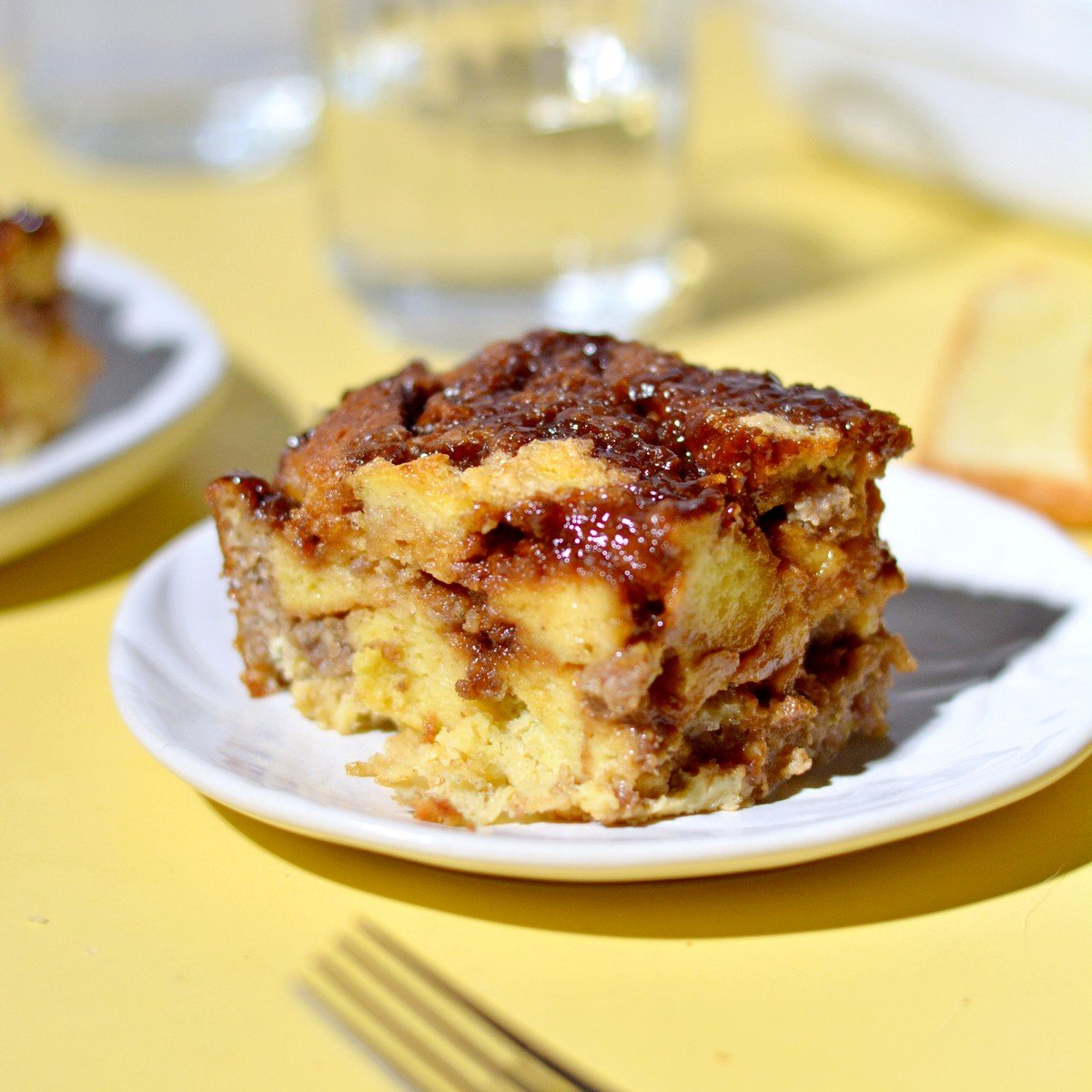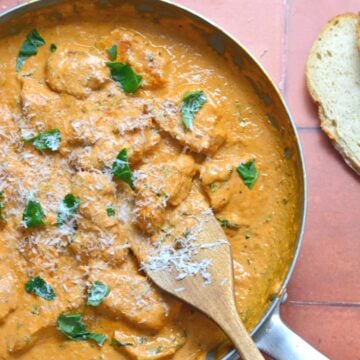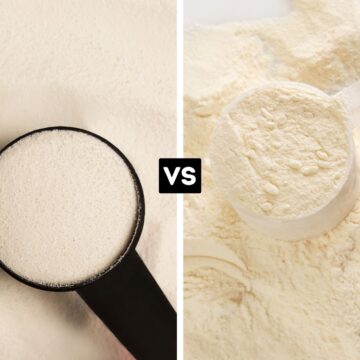Do you want to add more protein to your diet but aren't sure where to start? This comprehensive guide, or Protein Cheat Sheet as I call it, will give you the basics of what is protein, why we need it, and how to get it.

Want to save this recipe?
Enter your email below & we'll send it straight to your inbox. Plus you'll get fun new recipes from us every week!
I'm not a nutritionist or scientist (I am an engineer if that counts for anything - ha!). I want to be clear that this is based on my in-depth research, personal experience, and recommendations from my healthcare team. Should you have any concerns, please consult your own healthcare team.
what is protein?
Proteins are large molecules that are required for the structure, function, and regulation of tissue and organs (according to the National Library of Health). They power many chemical reactions in our bodies and provide structure and support for cells.
According to the Harvard School of Public Health, protein is made up of over 20 different amino acids. But the catch is that our bodies don't store amino acids even though they're required for our bodies to function. Our body either makes them on its own or gets them from food. Nine of these (called essential amino acids) must come from food because our bodies can't make them from scratch.
why do we need to eat protein?
These 9 amino acids are essentially why we need to eat protein. We need to give our body these amino acids so it can modify and use them to keep us functioning properly.
Animal proteins contain all nine essential amino acids while plant proteins don't usually. However, plant proteins and grains can be paired to deliver all the essential amino acids together. An example of this is pairing corn with squash and beans.
ok, how much protein do I need?
The answer to this varies greatly on your age, how active you are, and your fitness or lifestyle goals. The National Academy of Medicine recommends adults consume a minimum of 0.37 grams of animal protein for every pound of body weight per day. This value is higher for infants under 1 year of age and then slowly decreases as we age until we get to that 0.37-gram value.
I have to be very clear that this is a minimum value based on a sedentary lifestyle. Unfortunately, survey data also shows that up to 50% of girls ages 14-18 and adults over the age of 65 don't meet even the minimum protein requirement.
Recent research shows that a minimum of 0.54 grams of protein per pound of body weight per day is required to simply maintain muscle as you age. And if you're very physically active or breastfeeding, you may need up to double the protein intake.
All this to say you probably need more protein than you think. But it's worth noting that you also need adequate carbs and fats for your body to process the protein. For reference, I'm a 120-pound, moderately active, 28-year-old who breastfeeds my son and I aim for 100-120 grams of protein per day. I shoot for at least 30 grams of protein at each meal to make it easy.
sources of protein
While the standard protein recommendations are for animal proteins, there are many different types of proteins. No matter if you're vegan, vegetarian, dairy-free, or gluten-free, there is a way to get that protein in. Here's a list of the most common protein sources.
animal
This table notes the protein content of common animal sources of protein for 100-gram servings.
| Protein Source | Protein (g) |
|---|---|
| Pork tenderloin | 21 |
| Turkey breast | 24 |
| Chicken breast | 31 |
| Chicken thigh | 28 |
| Ground bison | 25 |
| Beef liver | 29 |
| Ground turkey | 27 |
| Ground beef | 26 |
| Beef steak | 30 |
| Salmon | 20 |
| Tuna | 25 |
| Sardines | 20 |
| Bone broth (beef) | 4 |
| Egg (about 2 whole) | 12 |
| Greek yogurt (nonfat) | 10 |
| Cottage cheese | 11 |
| Goat cheese | 22 |
| Beef collagen (dairy free) | 91 |
| Whey protein powder | 83 |

high protein recipes
Here are some of our favorite high-protein recipes using these protein-rich ingredients. I've also included if they're dairy-free (DF).
breakfast
- Protein French Toast Casserole with Sausage (DF)
- Breakfast Casserole with Turkey Sausage
- Maple Chorizo Breakfast Skillet (DF)
- 3-Ingredient Greek Yogurt Pancakes
- Protein Cinnamon Rolls (DF)
- Blender Sweet Potato Waffles (DF)
- Bacon Cottage Cheese Egg Bake
- Steak and Eggs Breakfast on the Grill (DF)
- Dunkin Wake Up Wrap
- Egg White Wraps (DF)
main meal
- One Pot Salmon Alfredo Orzo
- Bison Sheperd's Pie (DF)
- Brison Meatloaf (DF)
- Bison Sloppy Joes (DF)
- Bison Chilli (DF)
- Teriyaki Chicken Poke Bowl (DF)
- Chicken with Red Pesto Sauce
- Panko Crusted Chicken with Ranch
- Cajun Chicken Wrap
- Chipotle Ranch Grilled Chicken Burrito
- Pulled Beef Burgers (DF)
- Flamethrower Burger
- Parmesan Crusted Baked Walleye
- Ensenada Fish Tacos
dessert & drinks
- Ginger Matcha Latte (DF)
- Oat Milk Coffee Creamer (DF)
- Protein Shake for Breastfeeding (DF)
- Chaga Latte (DF)
- Vanilla Bean Coolata
- Bahama Mama Tropical Smoothie
- Biscoff Protein Balls
- Protein Carrot Cake
- Lemon Protein Bars (DF)
- Protein Biscuits
- Protein Tiramisu

plant
A note about plant-based protein, the body doesn't absorb it as efficiently as animal proteins. So you will need about 20% more overall grams of plant protein compared to animal.
This table lists common plant-based protein sources and how much protein they contain per 100 grams.
| Protein Source | Protein (g) |
|---|---|
| Lentils | 25 |
| Quinoa | 14 |
| Edameme | 12 |
| Ezekiel bread | 12 |
| Black beans | 8 |
| Chickpeas | 7 |
| Hemp seeds | 25 |
| Beyond meat | 22 |
| Almonds | 21 |
| Flax seeds | 18 |
| Chia seeds | 16 |
| Cashews | 18 |
| Peanuts | 26 |
| Tofu | 12 |
plant-powered protein recipes
These are some of my favorite ways to enjoy plant proteins!
- Honey Roasted Everything Bagel Cashews
- Chewy Chocolate Orange Ginger Cookies
- Trader Joe's Vanilla Overnight Oats Copycat
- Fancy Oatmeal
- Sweet Potato Porridge with Quinoa
- 3-ingrdient Oatmeal Pancakes

what we use most at joy to the food
These items are what we consider to be pantry staples for a high-protein lifestyle. The ingredient is listed alongside how much protein they have per 100 grams.
Until you get familiar with these options, I find it handy to keep this printout on the fridge or inside a cabinet.

additional resources
We always want you to have all the information you might need. So below are some additional resource posts to help you eat more protein you can do more cool stuff!
- Collagen Peptides vs Whey Protein
- 23 High Protein Breakfast Recipes that Aren't Eggs
- Egg Substitutes for Baking
- Tahini vs Peanut Butter
- 12 High Protein Low Carb Meals
We hope you've found some helpful information. Drop us a comment below to let us know if you have any questions or if you enjoyed this post!





drop us a note!